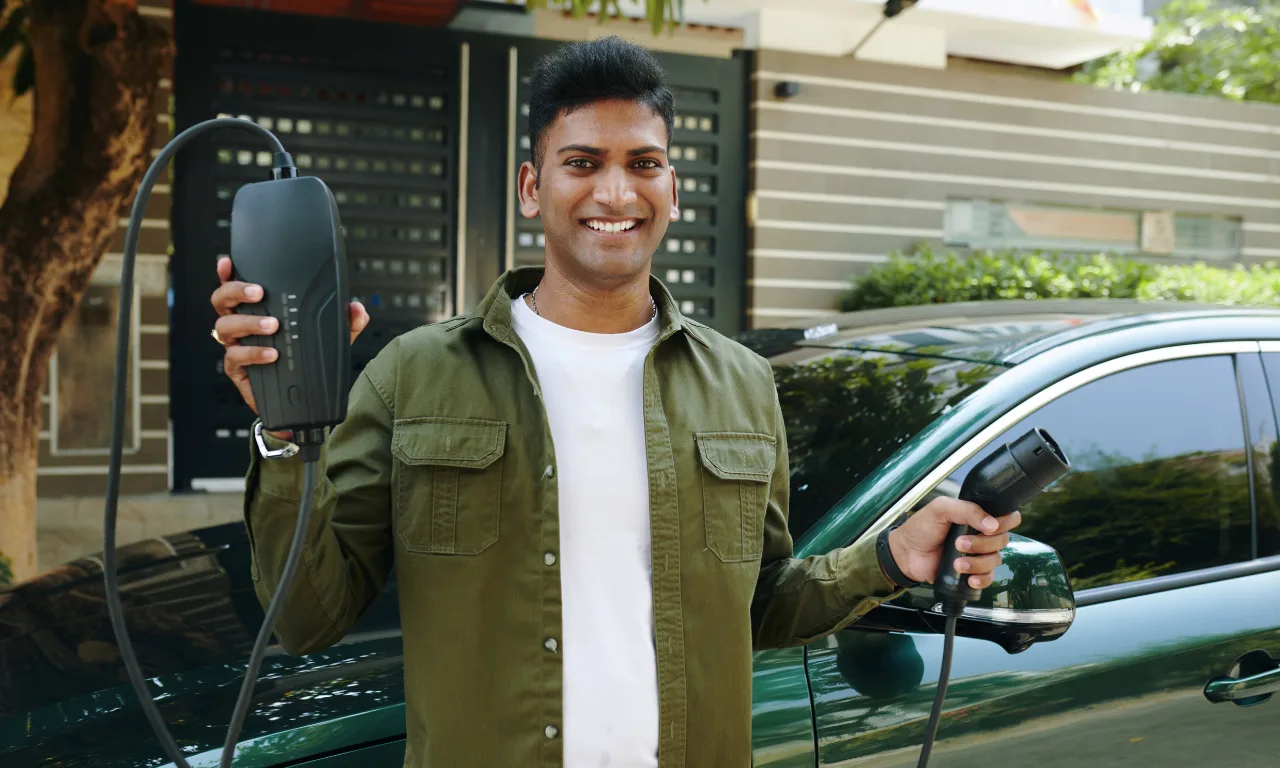Why EV Brands Lose 50% Customers Post-Sale

India’s electric vehicle industry is booming. Sales crossed 1.3 million EVs in FY2025, led by aggressive OEM launches, expanding charging infrastructure, and a visible shift in consumer mindset toward sustainable mobility.
But under the surface, a worrying trend persists: EV brands are losing nearly half of their customers after the first purchase.
That means 50% of buyers never repurchase, refer, or engage with the brand again.
For an industry built on the “future of mobility,” this isn’t a product issue it’s a post-sale experience failure.
The EV Boom’s Retention Bust
The EV in India market is moving fast, but customer experience hasn’t caught up. Dealers and OEMs focus heavily on acquisition, leaving ownership engagement to automated WhatsApp bots or delayed service callbacks.
According to GrowthJockey’s 2025 EV Consumer Benchmark Study:
-
54% of EV customers said their after-sales experience was worse than ICE brands.
-
63% said charging support and service quality were below expectations.
-
Only 38% felt their OEM’s mobile app added real value post-delivery.
These numbers paint a clear picture EV adoption is rising, but EV loyalty is falling.
Why Post-Sale Churn Is Higher in EVs
The reasons go deeper than poor service. They reflect the new behavioral DNA of EV buyers and the immature customer ecosystems around them.
1.Experience Gap: The “Silent Phase” After Delivery
Once an EV is delivered, customer engagement flatlines.
Unlike ICE owners who revisit service centers quarterly, EVs require fewer mechanical visits reducing touchpoints and brand reminders.
EV buyers expect digital-first engagement — app-based performance insights, energy reports, software updates yet most OEMs still rely on traditional CRM calls.
This disconnect creates disengagement.
2. Charging Chaos and Range Anxiety
The battery industry is still scaling, and so is public charging.
If a customer’s first month involves unreliable chargers or inflated costs, frustration builds fast.
Post-sale retention starts where the infrastructure ends support, visibility, and empathy matter more than capacity.
3. Software Neglect: The Car as a Living Product
EVs are software-defined vehicles, yet most OEMs treat them like hardware.
App dashboards, firmware updates, and connected car features are either inconsistent or poorly localized.
When an EV app crashes or misreports range, the brand loses credibility even if the car itself performs perfectly.
EV ownership is 20% engineering and 80% software UX.
Without robust automotive software development, retention dies silently.
4. Dealer Disconnect and Training Deficits
EV dealers are selling a new technology with old tools.
Salespeople often lack the training to explain battery chemistry, charging modes, or BESS technology (Battery Energy Storage Systems).
When post-sale support queries bounce between dealer and OEM, the customer feels orphaned.
For a tech-driven segment, this lack of alignment kills confidence faster than product flaws.
5.Data Blackouts in CRM and Service
The biggest culprit is data fragmentation.
Most EV OEMs lack a unified customer data platform (CDP) that connects lead, sale, service, and app engagement data.
This causes blind spots such as:
-
Duplicate ownership records across CRM and DMS.
-
Missed service follow-ups.
-
No personalized recommendations or lifetime engagement metrics.
Without intelligent data loops, post-sale experience remains reactive — and expensive.
The Cost of Losing 50% Customers
Losing half your customer base isn’t just a marketing failure; it’s a compounding business loss.
For every EV buyer lost post-sale, OEMs lose:
-
₹40,000–₹60,000 in service revenue.
-
Up to 3 referrals from satisfied owners.
-
Cross-sell potential for accessories, insurance renewals, or energy services.
Even a 10% retention uplift can improve lifetime profitability by 30–35%.
The New Retention Blueprint for EV OEMs
To reverse churn, EV OEMs must build an always-on ecosystem where engagement doesn’t end at delivery it evolves with usage.
1. Build a Digital Ownership OS
Every EV should have a unified ownership dashboard accessible via app and dealer CRM.
It should display battery health, range analytics, warranty claims, and personalized maintenance alerts.
This makes ownership transparent and data-backed the foundation of retention.
2. Reimagine Service as “Energy Experience”
The future of mobility isn’t about maintenance it’s about energy management.
OEMs should position service centers as “Energy Hubs” that offer:
-
Home charger diagnostics
-
Battery health scoring
-
Renewable energy subscription tie-ins
This shifts perception from “repair” to “upgrade.”
3. Predictive CX Using Agentic AI
Modern CRMs powered by agentic AI can predict churn before it happens.
By analyzing usage data, charging frequency, and app engagement, OEMs can send personalized nudges “Your battery is performing 10% below benchmark; book a check-up.”
Predictive intelligence turns reactive service into proactive care.
4. Connected Dealer Ecosystem
Integrate dealer DMS, service apps, and OEM CRM for a single source of customer truth.
Every touchpoint test ride, complaint, referral, payment must live in one dashboard.
Transparency builds trust, and trust builds loyalty.
5. Lifetime Loyalty Incentives
Instead of generic discounts, offer lifetime EV loyalty programs tied to verified energy usage or referral metrics.
Gamify ownership the more they drive, the more rewards they earn.
Brands like Ather and Ola Electric are already experimenting with tiered digital loyalty points synced with ride data.
Case Insight: What the Leaders Are Doing
Tata Motors
Introduced “EV Care+” with predictive service alerts
20% drop in customer complaints
Ather Energy
Real-time charging data via Ather Grid app
2× higher repeat purchase intent
BYD India
Unified CRM-DMS integration
25% faster service response time
The message is clear retention is no longer a marketing metric; it’s a software performance metric.
The Future of EV Retention
As India enters the year of mobility, retention will define who wins the EV race.
The next generation of EV ownership will combine:
-
Battery analytics to predict replacements.
-
Autonomous driving updates via OTA.
-
Renewable energy integration for charging optimization.
-
Connected car insights synced with dealer CRM.
Retention will move from post-sale to in-life engagement.
GrowthJockey is a full stack venture architect for enterprises building intelligent ecosystems that unify data, experience, and GTM.
We help EV OEMs turn post-sale operations into profit centers using tools like Intellsys.ai[1] for predictive analytics and Ottopilot for digital enablement.
Our goal: to create lifetime customer value not just one-time transactions.
FAQs
Q1. Why do EV brands lose customers after sale?
Ans. Poor post-sale experience, lack of digital engagement, and fragmented dealer–OEM coordination.
Q2. How can technology reduce churn?
Ans. By integrating CRM, DMS, and mobile apps to deliver proactive, predictive customer care.
Q3. Does software matter more than hardware in EV retention?
Ans. Absolutely. As EVs become software-defined, post-sale experience depends on OTA updates and digital UX.
Q4. What’s the ROI of fixing post-sale experience?
Ans. 10–15% retention improvement can yield 30% higher lifetime revenue and 2× referral growth.








